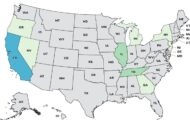The FDA is updating information on PFAS testing in the general food supply. The agency is estimating dietary exposure to PFAS (per- and polyfluoroalkyl substances) for American consumers.

The FDA has been testing fresh and processed foods for these chemicals since 2019. Nearly 1300 samples from a wide range of foods have been tested.
PFAS include chemicals that resist grease, oil, water, and heat. They were first used in the 1940s and are now in hundreds of products. Some PFAS are authorized by the FDA for limited use in food packaging, cookware, and food processing equipment. Accumulation of some PFAS does occur in humans and animals. And some types of PFAS have been associated with serious health problems.
Of 95 samples tested, the FDA detected PFAS in eight samples. They were two beef and two cod samples, and one sample each of shrimp, salmon, catfish, and tilapia. The conclusion is that exposure to PFAS at the levels measured in these samples is not likely to be a health concern for young children or the general population. No PFAS have been detected in more than 97% of the fresh and processed foods tested from the Total Diet Study to date.
However, testing has indicated that seafood may be at higher risk for environmental PFAS contamination compared to other types of food. Filter feeds such as clams, oysters, mussel, and scallops may bioaccumulate more environmental contaminants than other seafood types.
In Fiscal Year 2024 and beyond, the FDA will continue to analyze samples to increase this number. The goal is to accurately estimate the U.S. consumers’ exposure to these chemicals from food. The foods that are sampled include bread and grains; fruits and vegetables; and meat, eggs, and dairy products, including milk.




